How To Shock Your Pool Correctly
Owning a pool is a delightful luxury, but it comes with the responsibility of keeping the water clean and safe for everyone. One essential task in pool maintenance is shocking the pool. If you’re new to pool ownership or just seeking better ways to maintain your pool, you’ve come to the right place. This blog post will guide you through the ins and outs of shocking your pool correctly. From understanding what pool shocking is to avoiding common mistakes, we’ve got you covered. By the end of this guide, you'll be equipped with the knowledge to keep your pool crystal clear and safe for swimming.
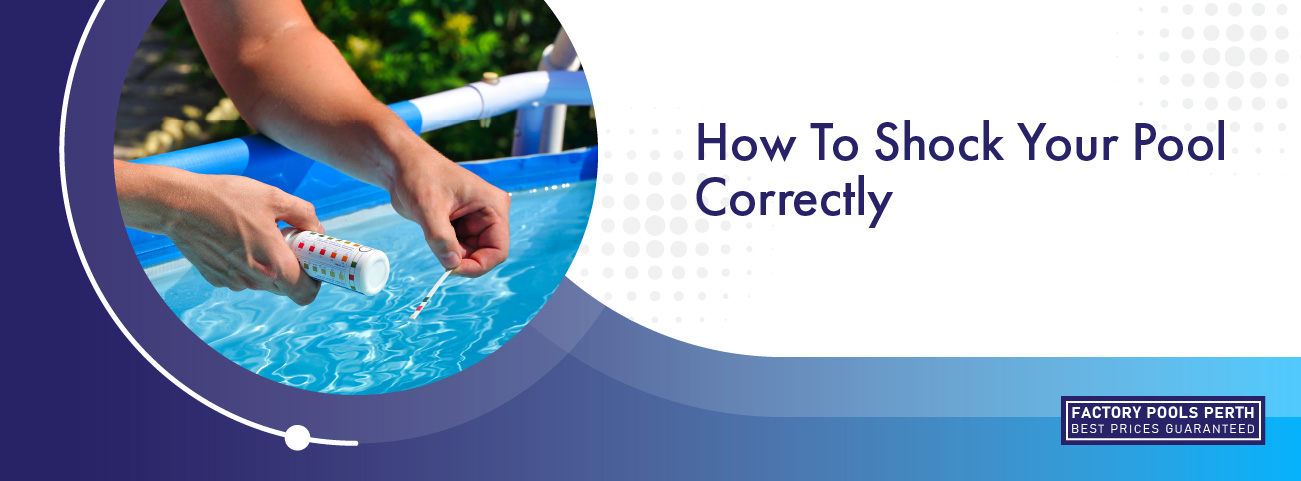
Understanding Pool Shocking
What is Pool Shocking?
Pool shocking is the process of adding a concentrated chemical, usually chlorine, to your pool to eliminate bacteria, algae, and other contaminants. This helps to maintain clean, clear water and ensures a safe swimming environment. The term “shocking” refers to the sudden and significant increase in the chlorine level, which helps to oxidise and remove organic matter that regular chlorination doesn’t fully address.
Why is Pool Shocking Necessary?
Regular pool use introduces various contaminants like sweat, oils, and debris, which can reduce the effectiveness of normal chlorine levels. Over time, these contaminants accumulate, leading to cloudy water, unpleasant odours, and potentially harmful bacteria growth. Shocking the pool restores the chlorine level to a point where it can effectively sanitise the water, ensuring that swimmers are not exposed to unsafe conditions.
Types of Pool Shocking Agents
There are several types of pool shocking agents available, each catering to different needs and preferences:
- Calcium Hypochlorite – A popular and cost-effective option, known for its high chlorine content. It’s widely used for its effectiveness in killing bacteria and controlling algae growth. However, it does increase calcium hardness in the water, so regular testing is recommended to ensure balance.
- Sodium Dichlor – A stabilised form of chlorine that dissolves quickly and is ideal for regular maintenance. Its stability means it remains effective longer, even under sunlight. This type is less likely to cause irritation to swimmers and is also less harsh on pool surfaces and equipment.
- Potassium Monopersulfate – A non-chlorine shock, perfect for those sensitive to chlorine or for pools with lower chlorine requirements. It’s particularly useful for oxidising contaminants without increasing chlorine levels, making it a great choice for weekly maintenance or after heavy pool use. It helps in maintaining clear water and reducing organic buildup.
Each type has its benefits and ideal use cases, so choose one that best suits your pool’s needs. Regular testing and maintenance will help you decide the appropriate shocking agent to keep your pool clean and safe for swimmers.
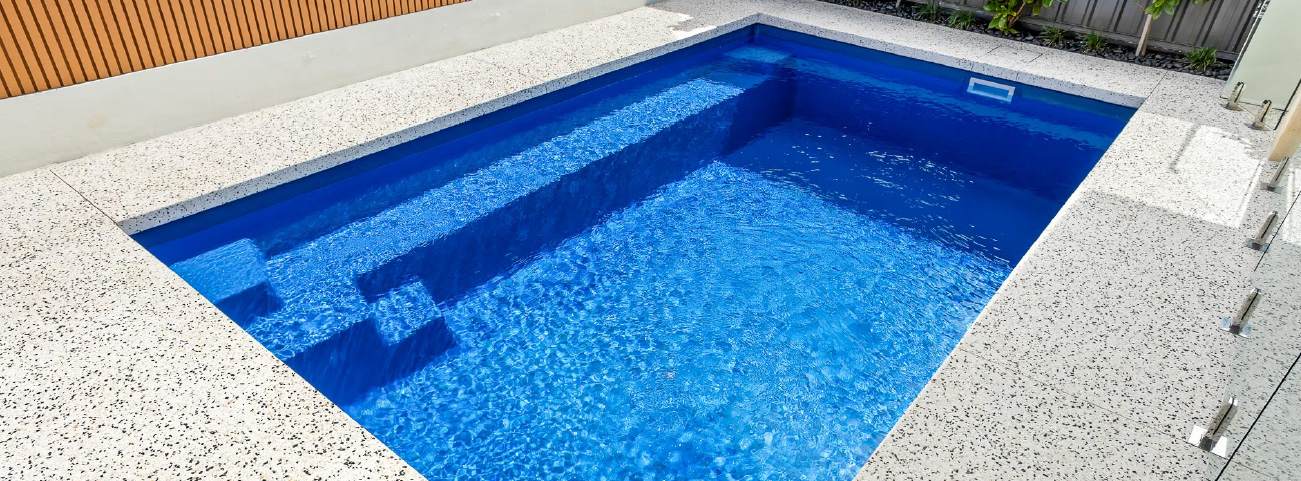
When to Shock Your Pool
Frequency of Shocking
A good rule of thumb is to shock your pool once a week. However, this can vary based on pool usage, weather conditions, and water quality. Regular testing of your pool water will help you determine the ideal frequency for your specific situation.
Signs That Indicate Your Pool Needs Shocking
Cloudy water, strong chlorine smell, and algae growth are tell-tale signs that your pool needs shocking. Additionally, if swimmers experience eye or skin irritation, it’s a clear indication that the water quality is compromised.
Best Time to Shock Your Pool
The best time to shock your pool is in the evening or at night. Sunlight can deplete chlorine levels, reducing the effectiveness of the shock treatment. Performing this task after sundown ensures that the chemicals work optimally throughout the night.
How to Shock Your Pool
Step-by-Step Instructions
- Test and Balance the Water – Before shocking, test your pool water to ensure that pH levels are between 7.2 and 7.6. This balance is crucial for the shock treatment to work effectively.
- Choose the Right Shock Product – Select a pool shock agent suitable for your pool type and current water condition.
- Prepare the Shock Solution – Follow the manufacturer’s instructions to mix the shock solution. This typically involves dissolving the product in a bucket of water.
- Add the Solution to the Pool – Slowly pour the prepared solution around the perimeter of the pool to ensure even distribution.
- Run the Pool Pump – Keep the pump running for at least 8 hours to circulate the shock solution throughout the pool.
Safety Precautions
- Wear protective gear such as gloves and goggles.
- Ensure proper ventilation when handling shock chemicals.
- Never mix different types of pool chemicals, as this can cause dangerous reactions.
Mistakes to Avoid
Over-Shocking
Adding too much shock can damage your pool’s surfaces and equipment. Always follow the recommended dosage instructions on the product label.
Under-Shocking
Inadequate shocking won’t effectively sanitise your pool. Ensure you use the correct amount of shock based on your pool size and current water condition.
Shocking During the Day
Sunlight depletes chlorine levels, making daytime shocking less effective. Always shock your pool in the evening or at night for the best results.
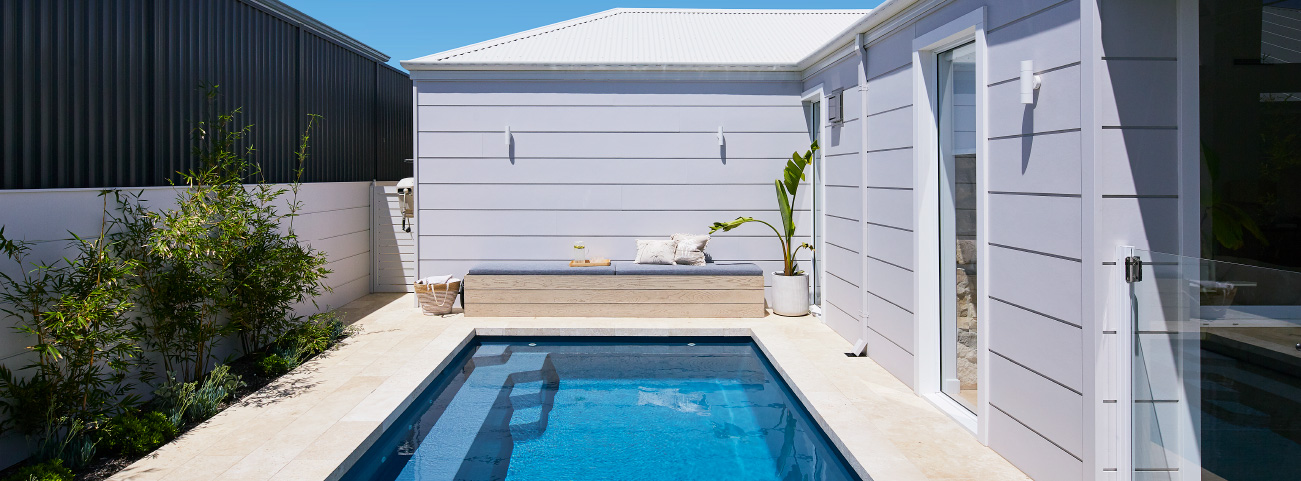
Benefits of Correct Pool Shocking
Improved Water Quality
Regular and correct pool shocking keeps your water clear, clean, and free from harmful contaminants. It enhances the swimming experience, making it enjoyable and safe for everyone.
Equipment Longevity
Properly maintained water reduces wear and tear on your pool’s filtration system and other equipment. This can extend the life of your pool infrastructure, saving you money on repairs and replacements.
Swimmer Health
Shocking your pool correctly ensures that harmful bacteria and algae are kept at bay. This minimises the risk of skin infections, eye irritation, and other health issues for swimmers.
Shocking your pool correctly is essential for maintaining pristine water quality, prolonging the life of your pool equipment, and ensuring the health of everyone who enjoys a swim. Pool shocking involves adding a high dose of chlorine or other chemicals to eliminate contaminants, such as bacteria, algae, and organic matter, which regular sanitising can’t always address.
By understanding the importance of pool shocking, knowing when and how to do it, and avoiding common mistakes, you can keep your pool in top condition. It’s recommended to shock your pool after heavy usage, heavy rains, extreme temperatures, or whenever the water appears cloudy or has an unpleasant odour. Regular shocking not only keeps the water sparkling clean but also protects swimmers from potential health risks, making the pool a safe and enjoyable place for everyone.
How To Shock Your Pool Correctly
Owning a pool is a delightful luxury, but it comes with the responsibility of keeping the water clean and safe for everyone. One essential task in pool maintenance is shocking the pool. If you’re new to pool ownership or just seeking better ways to maintain your pool, you’ve come to the right place. This blog post will guide you through the ins and outs of shocking your pool correctly. From understanding what pool shocking is to avoiding common mistakes, we’ve got you covered. By the end of this guide, you'll be equipped with the knowledge to keep your pool crystal clear and safe for swimming.
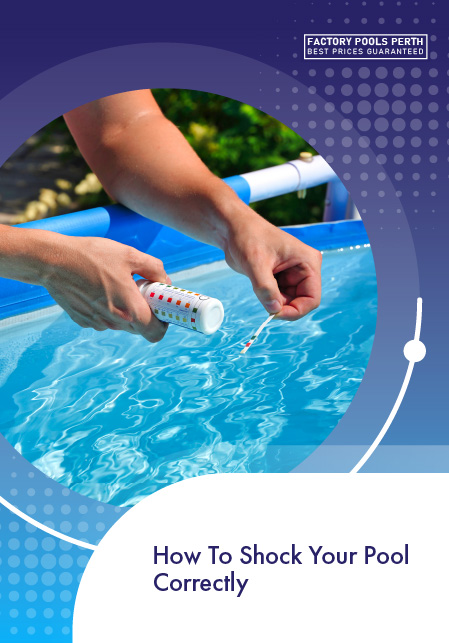
Understanding Pool Shocking
What is Pool Shocking?
Pool shocking is the process of adding a concentrated chemical, usually chlorine, to your pool to eliminate bacteria, algae, and other contaminants. This helps to maintain clean, clear water and ensures a safe swimming environment. The term “shocking” refers to the sudden and significant increase in the chlorine level, which helps to oxidise and remove organic matter that regular chlorination doesn’t fully address.
Why is Pool Shocking Necessary?
Regular pool use introduces various contaminants like sweat, oils, and debris, which can reduce the effectiveness of normal chlorine levels. Over time, these contaminants accumulate, leading to cloudy water, unpleasant odours, and potentially harmful bacteria growth. Shocking the pool restores the chlorine level to a point where it can effectively sanitise the water, ensuring that swimmers are not exposed to unsafe conditions.
Types of Pool Shocking Agents
There are several types of pool shocking agents available, each catering to different needs and preferences:
- Calcium Hypochlorite – A popular and cost-effective option, known for its high chlorine content. It’s widely used for its effectiveness in killing bacteria and controlling algae growth. However, it does increase calcium hardness in the water, so regular testing is recommended to ensure balance.
- Sodium Dichlor – A stabilised form of chlorine that dissolves quickly and is ideal for regular maintenance. Its stability means it remains effective longer, even under sunlight. This type is less likely to cause irritation to swimmers and is also less harsh on pool surfaces and equipment.
- Potassium Monopersulfate – A non-chlorine shock, perfect for those sensitive to chlorine or for pools with lower chlorine requirements. It’s particularly useful for oxidising contaminants without increasing chlorine levels, making it a great choice for weekly maintenance or after heavy pool use. It helps in maintaining clear water and reducing organic buildup.
Each type has its benefits and ideal use cases, so choose one that best suits your pool’s needs. Regular testing and maintenance will help you decide the appropriate shocking agent to keep your pool clean and safe for swimmers.
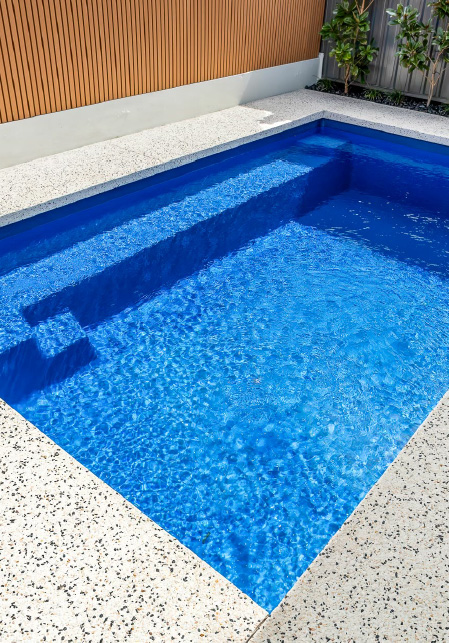
When to Shock Your Pool
Frequency of Shocking
A good rule of thumb is to shock your pool once a week. However, this can vary based on pool usage, weather conditions, and water quality. Regular testing of your pool water will help you determine the ideal frequency for your specific situation.
Signs That Indicate Your Pool Needs Shocking
Cloudy water, strong chlorine smell, and algae growth are tell-tale signs that your pool needs shocking. Additionally, if swimmers experience eye or skin irritation, it’s a clear indication that the water quality is compromised.
Best Time to Shock Your Pool
The best time to shock your pool is in the evening or at night. Sunlight can deplete chlorine levels, reducing the effectiveness of the shock treatment. Performing this task after sundown ensures that the chemicals work optimally throughout the night.
How to Shock Your Pool
Step-by-Step Instructions
- Test and Balance the Water – Before shocking, test your pool water to ensure that pH levels are between 7.2 and 7.6. This balance is crucial for the shock treatment to work effectively.
- Choose the Right Shock Product – Select a pool shock agent suitable for your pool type and current water condition.
- Prepare the Shock Solution – Follow the manufacturer’s instructions to mix the shock solution. This typically involves dissolving the product in a bucket of water.
- Add the Solution to the Pool – Slowly pour the prepared solution around the perimeter of the pool to ensure even distribution.
- Run the Pool Pump – Keep the pump running for at least 8 hours to circulate the shock solution throughout the pool.
Safety Precautions
- Wear protective gear such as gloves and goggles.
- Ensure proper ventilation when handling shock chemicals.
- Never mix different types of pool chemicals, as this can cause dangerous reactions.
Mistakes to Avoid
Over-Shocking
Adding too much shock can damage your pool’s surfaces and equipment. Always follow the recommended dosage instructions on the product label.
Under-Shocking
Inadequate shocking won’t effectively sanitise your pool. Ensure you use the correct amount of shock based on your pool size and current water condition.
Shocking During the Day
Sunlight depletes chlorine levels, making daytime shocking less effective. Always shock your pool in the evening or at night for the best results.
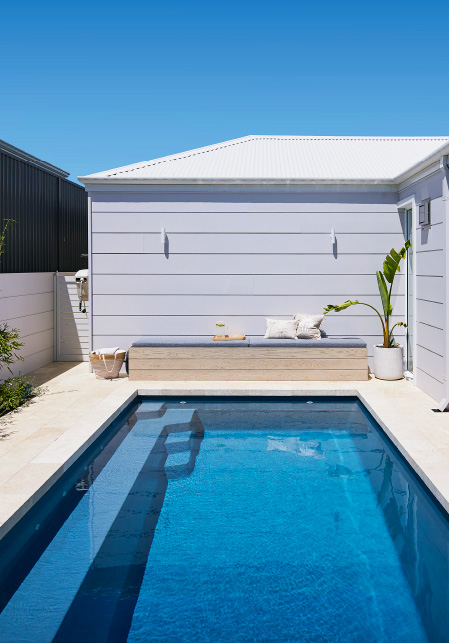
Benefits of Correct Pool Shocking
Improved Water Quality
Regular and correct pool shocking keeps your water clear, clean, and free from harmful contaminants. It enhances the swimming experience, making it enjoyable and safe for everyone.
Equipment Longevity
Properly maintained water reduces wear and tear on your pool’s filtration system and other equipment. This can extend the life of your pool infrastructure, saving you money on repairs and replacements.
Swimmer Health
Shocking your pool correctly ensures that harmful bacteria and algae are kept at bay. This minimises the risk of skin infections, eye irritation, and other health issues for swimmers.
Shocking your pool correctly is essential for maintaining pristine water quality, prolonging the life of your pool equipment, and ensuring the health of everyone who enjoys a swim. Pool shocking involves adding a high dose of chlorine or other chemicals to eliminate contaminants, such as bacteria, algae, and organic matter, which regular sanitising can’t always address.
By understanding the importance of pool shocking, knowing when and how to do it, and avoiding common mistakes, you can keep your pool in top condition. It’s recommended to shock your pool after heavy usage, heavy rains, extreme temperatures, or whenever the water appears cloudy or has an unpleasant odour. Regular shocking not only keeps the water sparkling clean but also protects swimmers from potential health risks, making the pool a safe and enjoyable place for everyone.



